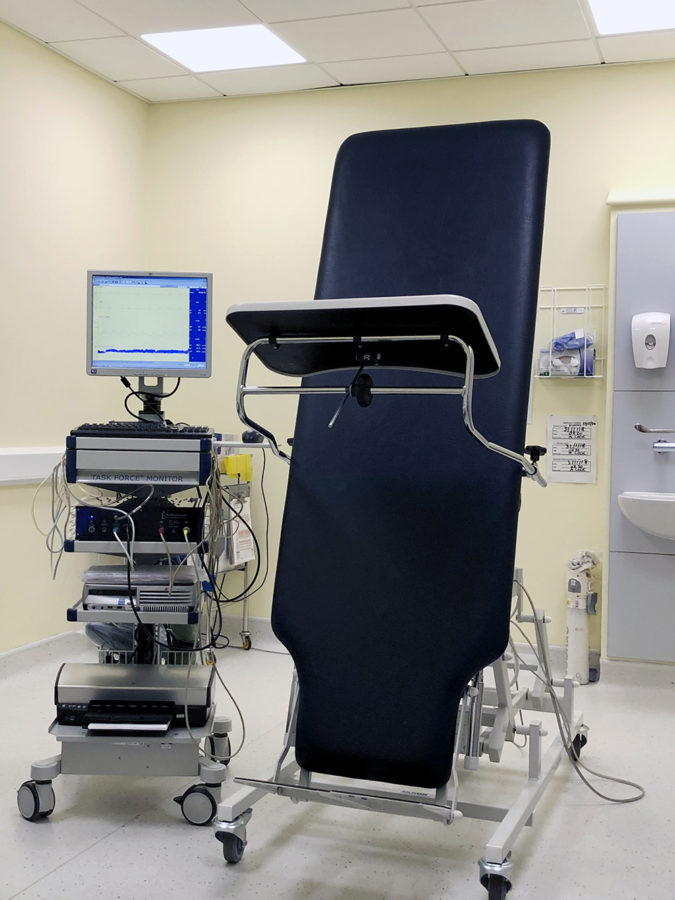Table of Content
Do not move your legs while you are in the standing position. The table will be tilt to 30 degrees for 2 to 3 minutes, 45 degrees for 2 to 3 minutes, and 70 degrees for up to 45 minutes. Then, as you lie still, we will record your blood pressure and ECG. If one of your arms cannot be used for an IV or blood pressure, please tell us before the test begins. A doctor will explain the details of the test, answer your questions and have you sign a consent form.

The tilt table does exactly as the name suggests. It allows a medical professional to adjust the angle of the flat top while you’re lying down. The tilt-table test can simulate the effect of sitting to standing in a controlled environment, so a doctor can see how a person’s body responds. Places sticky patches on your chest, legs and arms. Wires connect the electrodes to an electrocardiogram machine that monitors your heart rate.
Frequently asked questions
You can wear whatever is comfortable for your test, and you will likely be asked to change into an examination gown. You won't receive your results the day of the test and may need to wait several days for them. It does this by replicating your symptoms so your physician can get a better sense of the circumstances under which you have these experiences.

But it's helpful to wear a short-sleeved shirt or a loose long-sleeved shirt that can be pushed up during the test. Doing so helps with fitting the blood pressure cuff around the arm properly. Keeping hydrated helps prevent symptoms of low blood pressure. Drink plenty of water before long periods of standing, or any activities that tend to trigger symptoms. Your child may feel tired and nauseated for a while after the test. Test results may be available right away or in a few days.
What happens during a tilt table test for a child?
An echocardiogram can show blood flow through the heart and heart valves. The test can help identify structural heart disease. The provider will put a blood pressure cuff on one of your child's arms to check blood pressure throughout the test. You will then lie down on a table and be secured to it so that you can maintain your position when it is moved.

If you faint during the test, the test will also be stopped. Your tilt table test and recovery will take about three hours to complete. Bring a list of medications, any available medical reports, and tell us about all allergies you have. Your healthcare team will talk to you about any additional tests you need before they are scheduled.
How will I feel during the test?
It is important to stay as still as possible when vertical. Try not to tighten the muscles of your legs or buttocks while upright. There are many different tests that practitioners can use to assess if a patient has POTS. Be prepared to discuss your diet and exercise habits, especially the amount of salt in your diet. If you don't already follow a diet or exercise routine, be ready to talk to your provider about challenges you might face in getting started.

No eating or drinking before the test.This can help prevent any nausea or vomiting that may occur. For example, POTS sometimes occurs because of elevated adrenaline levels. The medication is usually a pill containing 0.4 mg of nitroglycerine. However, the staff may instead administer it through the IV line. They may insert an IV line so they can easily administer medicines and fluids if they need to.
Standing Test
You should be able to resume your normal diet and activities, unless your healthcare provider instructs you differently. When you are stable, the IV line, blood pressure cuff or arterial line, and ECG electrodes will be removed. Your healthcare provider will give you instructions as to how long you should withhold food or liquids. Your healthcare provider will explain the test to you and you can ask questions. There may be other reasons for your healthcare provider to advise a tilt table test. If you don’t have a reaction to the changes in the table’s positioning, doctors consider the test to be negative.
A stress test is done during exercise, such as walking on a treadmill. People who can't exercise might be given medication to make the heart work harder. The heart is then monitored with electrocardiography, echocardiography or other tests. The provider will attach electrodes with wires to your child's chest. The wires are attached to an ECG machine that lets the provider monitor your child's heart rhythm throughout the test. A provider may put an IV line in one of your child's arm veins to give medicine.
Except in rare instances, you will be able to go home after the test is finished. You may wear a short-sleeved or sleeveless t-shirt in place of a hospital gown. If you are wearing a long-sleeved or tight-fitting shirt, you may need to change into a hospital gown for the test.
The major neurotransmitter of this system is norepinephrine, a catecholamine. Therefore, the catecholamine test can assess levels of sympathetic activity in a variety of situations. It is common to use an IV for blood draws to prevent distress at the time of the reading, as this would skew the results. Blood will be drawn after the patient has been horizontal for minutes, and then again after being tilted to a standing position. Treatment for orthostatic hypotension is directed at the cause rather than the low blood pressure itself.

No comments:
Post a Comment